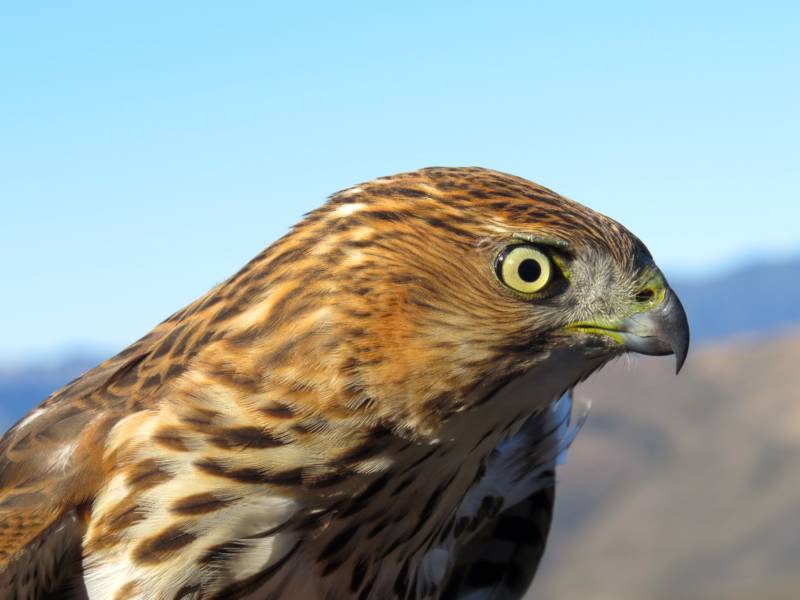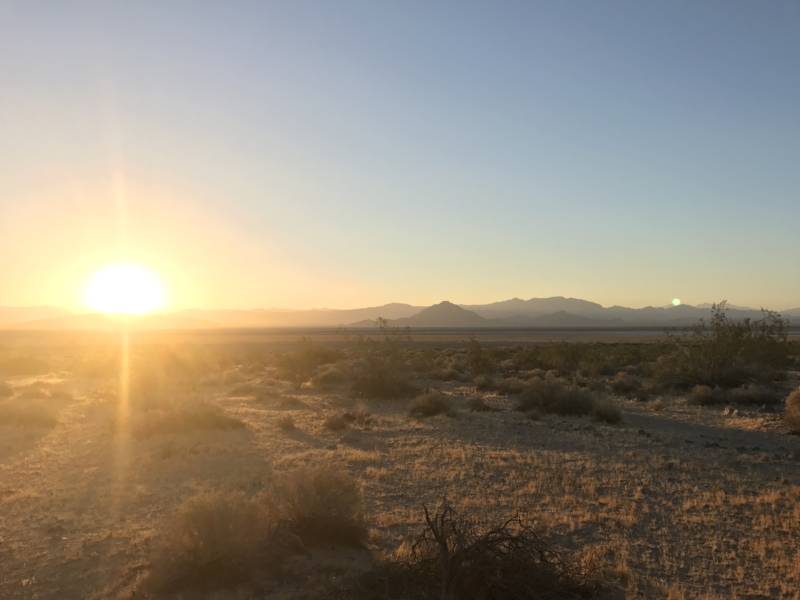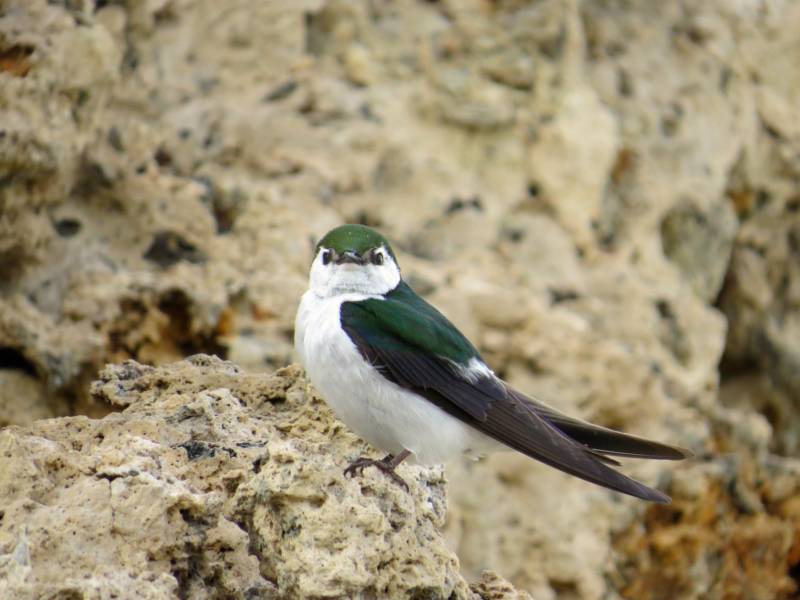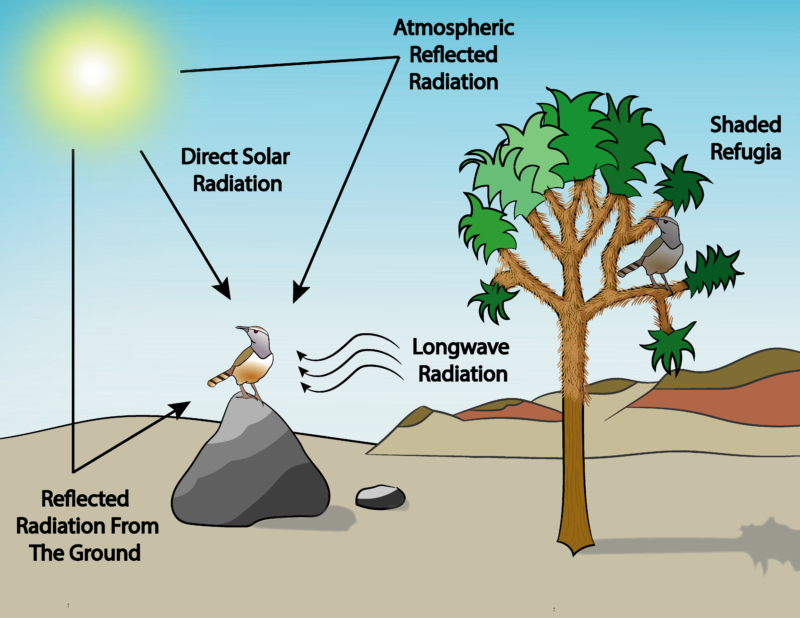It’s easy to imagine deserts as barren landscapes. Hot, punishing and absent of life. When we do think of life in the desert, it’s often cacti, snakes or other reptiles that come to mind. But turn your attention skyward, you’ll see birds play a role in desert ecosystems as well.
Century-Old Records Show Bird Species Have Seriously Declined in a Hotter Mojave Desert

Desert birds help pollinate flowers and disperse seeds, control insect outbreaks, and keep rodent populations in check. They also fill the silence with the sound of their calls.
As UC Berkeley ecologist Steven Beissinger puts it: “A desert without birds is half empty. A desert without birds is a quiet place.”
For 15 years, Beissinger and his colleagues at Berkeley’s Museum of Vertebrate Zoology have been studying changes in wildlife populations across California’s diverse landscapes. Their research found that nearly 30 percent of the 135 bird species that once flourished in the Mojave Desert have suffered significant declines over the past century. And more than 40 percent fewer species were observed, on average, across individual fields sites when compared with surveys from the museum’s archives — meaning even more birds have disappeared in pockets.
A study published this week in Proceedings of the National Academy of Sciences links the disappearance of Mojave’s desert birds to heat stress from climate change, and helps explain why some species are more vulnerable than others.
The Mojave occupies nearly 50,000 square miles, mostly in southeastern California and Nevada, and it’s considered to be North America’s driest desert.

Over the last 100 years, average temperatures in the Mojave have risen about 2 degrees Celsius. The extra heat means birds require more water to keep their core body temperatures low enough to survive.
“Simply put, what we’ve found is that birds don’t have enough water to keep themselves cool anymore,” said Eric Riddell, a physiological ecologist at UC Berkeley and the study’s lead author.
But not all species were affected equally. The American kestrel, prairie falcon, western meadowlark and violet-green swallow were among those whose populations have declined most. Populations of canyon wren, verdin, blue-gray gnatcatcher and ruby-crowned kinglet were more stable. The common raven was the only species whose population increased over the last century.
More Water Needed = Bigger Decline
Birds lower their temperature through a process of evaporative cooling, akin to perspiration in humans. But instead of sweating moisture, birds expel it in their breath. As they breath, moisture evaporates off their throats, releasing excess body heat and cooling them down. This cooling can be sped up by panting (similar to dogs) or vibrating their throat muscles in a gesture called gular fluttering.
But Riddell says different species need different amounts of water to meet the demands of evaporative cooling. This need for water is determined by characteristics like size, shape, feather density and color.

In general, Riddell says, larger birds will need more water to keep cool, as will darker birds, whose feathers absorb more heat.
To understand the relationship between climate change and bird decline, Riddell created computational models, or “virtual birds,” to measure how the water demand of different species changed with the temperature increases of the last century.
“What we found was that the more water that a certain species needed to cool off, the more that that species has declined over the last hundred years,” Riddell said.
Some of the species most affected were the larger insectivores and carnivorous birds, like hawks and raptors, which get most of their water not by drinking, but from what they eat. And those types of birds have particularly high cooling requirements, Riddell says.
In hotter climates, these species will need to eat more to stay cool. An insectivore, for example, might need to catch 70 more bugs per day to fulfill its water demand.

The increased need to hunt and forage means these species must expel more energy and face even more exposure to sun and heat. The end result is heat stress.
Riddell say birds that rely on seeds for their diet typically get their water by drinking from springs or pools found in desert oases. While the Mojave has been getting drier with climate change, the continued presence of at least some surface water appears to have mitigated population declines in certain herbivore species.
What 100 Year-Old Field Notes Tell Us
Riddell and Beissinger say the insights gained from their research would not be possible without the work of groundbreaking field biologist Joseph Grinnell, the first director of Berkeley’s Museum of Vertebrate Zoology, who headed the institution from 1908 until his death in 1939. Surveys of birds and mammals conducted by Grinnell and his colleagues, along with meticulously kept field field notes, have given researchers a baseline from which to measure changes over the past century.
Beissinger says he recognizes this cache as a “rare opportunity,” considering how many climate change studies must rely on data just three or four decades old.
“These field notebooks would be sort of like an (inventory) of what life was like in California and the West,” Beissigner said. “[Grinnell] recognized that the value of this would likely, as he wrote, not be known for a century … and that the student of the future would have an opportunity to see what the original faunal conditions were like in California. And we were that student of the future.”
Riddell says that a lot of climate change research is focused on forecasting the future.
“When we sit around and we talk about the effects of climate change, we’re often focused on the future, and we rarely think about what’s happened in the last hundred years,” he said. “We think that these birds are going to experience this in the future. This sort of lethal wall that they can’t get past and they’re all going to essentially drop from the sky. But what our research has shown is that even the climate change that’s already occurred is too hot for these birds and too much for them to deal with.”
The goal, Riddell says, is to better understand how and why climate change is affecting bird and other wildlife populations.
Riddell says some birds may be able to adapt. For example, there’s evidence to suggest that some species may be shifting their nesting periods to earlier in the year in response to warming temperatures.
Getting smaller is another way birds can combat heat stress. Smaller birds, Riddell says, will need less water to keep themselves cool. But, he says, there’s a limit.
“We found, depending on the climate scenario, that birds would have to shrink by as much as 35 to 50 percent over the next century, which is just not possible.” With deserts getting hotter and desert-like conditions becoming more common in western North America, he expects bird populations will continue to decline.
“So that means that when we go out to the Mojave or Joshua Tree or the Sonoran Desert, that over the next century we can expect to see far fewer birds as we’re walking around in the desert environment.”